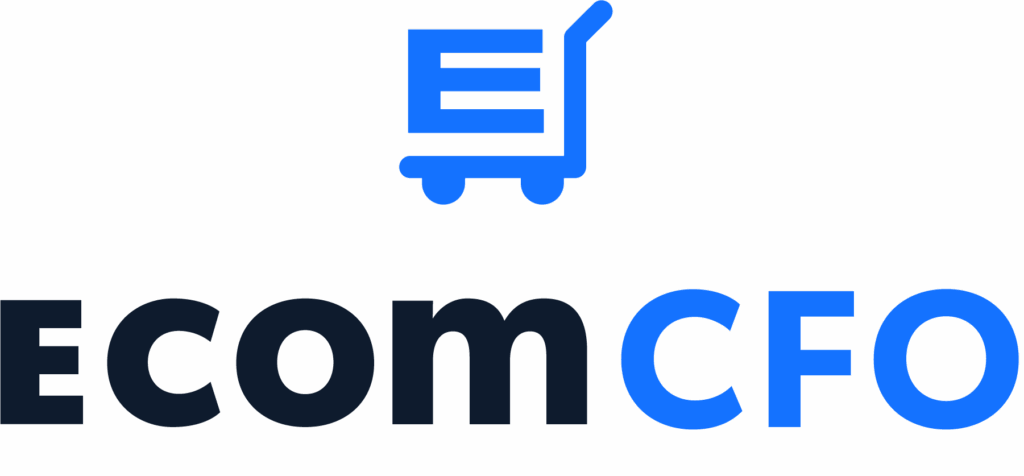Whenever we (or any CFO) work(s) with a client, two of the biggest objectives are:
- First, clean up and organize the books to achieve reliable data
- Two, port that data into a financial reporting tool for clear, effective decision-making.
This post is about Two.
Simple, not easy.
I don’t like defining terms – you guys are smart – but there is a misconception about what constitutes “financial reporting”…
The starting state of most operators
Before founders come to us, “financial reporting” typically looks something like the graphic below.
They’re porting (or manually adding) data from sales channels and their ad platforms to some kind of spreadsheet or app, which they check several times throughout the day.
They also check the bank account daily which functions effectively as the mood setter for the day.
“As long as the bank balance is going up”.

Sound familiar?
Founders use this method to drive daily marketing spend decisions, and since ad spend is usually the largest or 2nd largest P&L line item, this setup becomes a proxy for evaluating overall profitability.
The issue is that this doesn’t tell us anything about…
- Cash Flow
- Company Level Profitability
- Strength of the Balance Sheet
- Etc.
Founders lose their way without reviewing the financials in their entirety.
Seeing part of the story is not the same as seeing the full story.
Worse, in this state, it takes hours or days of sifting through data to get that full story. Trying to make any kind of informed decision is painful.
So most of the time, they just guess.
This is how it’s possible to spend years working hard as hell, all the while running headlong into bankruptcy without even knowing it.
So what to do about it?
We need to add two useful layers of abstraction.
If this starting-state is focused on transaction-level granularity (and only a subset of transactions at that) we can add tools that allow a founder to zoom out and see directionally how things are doing across the company.
Forest and trees shit.

First, we make sure we’re gathering all the important data. Not just sales channel data and ad platforms, but all CC’s, bank accounts, merchant processors, payroll, and the big SBA loan you took out – everything.
That data goes into QBO and we work our accounting magic.
Note, however, individual orders don’t make it into the accounting system. Instead, we go from transactions to settlements and payouts.
This is the first level of abstraction.
“Settlements” or “payouts” don’t typically mean much to founders – no woman ever gave me her number because we deal with “settlements” – but they mean a lot to those of us on the finance and accounting side.
They allow us to zoom out and create the three financial statements – P&L, balance sheet, and statement of cash flows.
Great numbers get numbers.

With those three statements, we’re already able to get a better view of what’s going on across the business.
But we can do one better.
To enhance the speed and clarity of our decision-making, we need to slice and dice the financial statements to…
- Understand key metrics
- Spot meaningful trends
- Identify root in minutes, rather than hours or days
This is our second layer of abstraction. The highest-level view, useful for making clear, informed decisions at the company level.
For this, we like Fathom (the dashboard I walked through here). There are plenty of other tools, or a spreadsheet can work as long as you know what you’re doing.

The goal is to build a system the founder can use to see the good, see the bad, see the size of the bad, and know where to allocate resources to fix the bad.
In less than 1 hour.
For reference, I can look at our client’s financial reports and summarize what happened the previous month in less than 10 minutes.
We don’t run out of time. We run out of energy.
Founders should deploy energy to fixing the problem, not identifying the problem.
Certain problems only become clear at this level of abstraction.
If you’re still reading…
There is one more component to add to this…
I spent this entire article talking about what happened (the past and the present).
But the future remains – budgeting and forecasting.
Having a budget doesn’t just help you set goals. It helps you make dispassionate decisions throughout the year.
Integrating it into a tool like Fathom (I swear I’m going to seek a sponsorship deal out of this) makes decision-making that much faster and better.

Budgeting and forecasting is a topic all its own.
I’ll write about it soon, but for now, just know that our free P&L Benchmark Report was designed to be the industry-best resource for anyone trying to create their annual budget.
It’s the document I wish I had while helping clients in the past.

